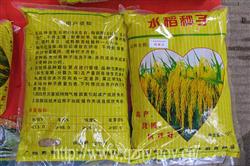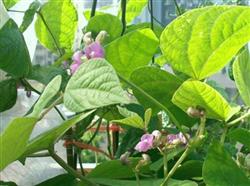When will rice pest and disease control begin?

When does rice pest control begin? Please refer to the following for guidance on rice pest control: 1. Choose blast resistant varieties according to local conditions. Early rice and middle rice should not be planted as much as possible. Jinyou 402, You I402, Jinyou 974, Zhongyou 974, You I66, Zhongyou 752, Jinyou 752, 65002, Xinxiangyou 80, Honglian You 6 and other susceptible varieties. Early ploughing in spring can reduce the source of borer insects by reducing winter fallow fields and winter crop fields. It is required that southern Jiangxi be cultivated before April 1, central Jiangxi before April 10, and northern Jiangxi before April 15. Do a good job in seed treatment to reduce the occurrence of diseases and insect pests. Early rice seeds were soaked with 25% imidamide emulsifiable concentrate 2000-3000 times solution for 48 hours to directly germinate and prevent rice blast and bakanae disease. Mid-late rice seed with 10% imidacloprid WP 40g, mixed with budding grain and directly sown, prevent thrips and planthoppers in seedling field. 2. Spraying super free medicine 3-5 days before seedling transplanting to prevent or reduce the occurrence of diseases and insect pests in tillering stage of field. Early rice seedling field: spray 40% borer net emulsifiable solution 100ml or 5% Regent suspension agent 60ml per mu to prevent and reduce the occurrence of the first generation of Chilo suppressalis in the field; spray 75% panaxton wettable powder 60g or 20% tricyclazole powder 200g per mu to prevent field leaf plague. Mid-rice seedling field: prevention of Chilo suppressalis and leaf blast: spraying 40% borer net emulsifiable solution 100ml or 5% Regent suspension agent 60ml per mu to prevent and reduce the occurrence of the first generation of Chilo suppressalis in the field; spraying 75% pestilence wettable powder 60g or 20% tricyclazole powder 200g per mu to prevent leaf blast in the field. Spraying 10% imidacloprid WP 40g per mu to prevent rice planthopper and rice thrips in field. Late rice seedling field: spray 40% borer net emulsifiable solution 100ml per mu to prevent and reduce the occurrence of borer in field. III. From tillering to booting stage, the key point is to control stem borers, and mixed drugs are used to control other diseases and insect pests: early rice is used to control the first generation of Chilo suppressalis in the middle and late May, and the rice field with the withered sheath cluster rate of more than 8% is used to control, and leaf sheath spraying is emphasized. During this period, leaf plague, especially central or acute disease spots, is found, and timely application is used for prevention and control. Late rice is planted around August 10 or 10-15 days after planting to control Chilo suppressalis or Chilo suppressalis. Jinggangmycin is added to prevent sheath blight when applying pesticide to control borers. IV. Mixed application of drugs at heading stage to protect ears: mixed application of drugs and comprehensive management of various diseases and insect pests shall be implemented. Early rice focuses on controlling panicle blast, sheath blight and rice planthopper; middle rice focuses on controlling stem borers and panicle blast, taking into account rice planthopper and sheath blight; late rice focuses on controlling stem borers, taking into account sheath blight and rice planthopper. Jinggangmycin should be added to control sheath blight at heading stage and seedling at tillering stage, and Gongxinglong should be added to control rice planthopper in frequent occurrence area of rice planthopper; rice quqing should be used to control rice false smut frequently occurring area and susceptible varieties at early bud stage (big belly stage); rice leaf roller should be controlled at early rice heading stage, late tillering stage of middle and late rice to jointing and booting stage in main falling area. V. During harvest period, clean mud shall be carried out to cut rice, and early rice and middle rice shall be cultivated in time after harvest. Click for more rice cultivation technology Click for more food crop cultivation technology
- Prev

Kidney bean planting: why can't kidney bean be watered during flowering?
Why can't kidney beans be watered during flowering? Please introduce the reason that "dry flowers and wet pods" is the key point of kidney bean florescence management. In other words, kidney beans should be mainly controlled by water before flowering. If the soil moisture is good, water should be watered only once about 10 days before flowering, and then until the pod sits and grows to about 4 cm.
- Next

Peanut planting technology: what is the effect of micro-fertilizer on peanuts?
What effect does micro-fertilizer have on peanuts? Please introduce that micro-fertilizer plays a very important role in the growth and development of peanut. Reasonable application of micro-fertilizer has the effect of low input and high output. Although farmers have some understanding of this, they are very blind in application and often fail to achieve the goal of increasing production. Therefore, in production practice, according to the needs of peanuts for micro-fertilizer.
Related
- The first cup of black tea in spring, the flavor and history of tea gardens in Kenya, Africa
- The computer can not only choose potatoes, but also grow tea rice. AI will grow winter oolong tea champion.
- It is not only the inflated tea bitten by insects, but also engraved with the four seasons tea in Beipu.
- The Oriental Beauty Tea Festival in Zhuxian County takes the stage at the weekend to experience the plus-size feast of oil tea.
- & quot; Oriental Beauty Tea & Exploration of Emei in Hsinchu, the hometown of quot;
- The new variety of strawberry "Tainong 1" dessert is the first choice with mellow aroma. Crimson gorgeous
- History of Tea in Taiwan: from Wild Inner Mountain to Export Tea Garden
- Two types of Taiwan Oriental Beauty Black Tea won the British three-Star Award for Childhood Tea Xiang Zhang Jiaqi changed from pilot to champion tea maker.
- Banana species and varieties: the planting history of Taiwan Xianren banana and dwarf banana is long, is banana disease resistant?
- Coffee planting Technology: Qianjie Coffee from Seedling to harvesting

